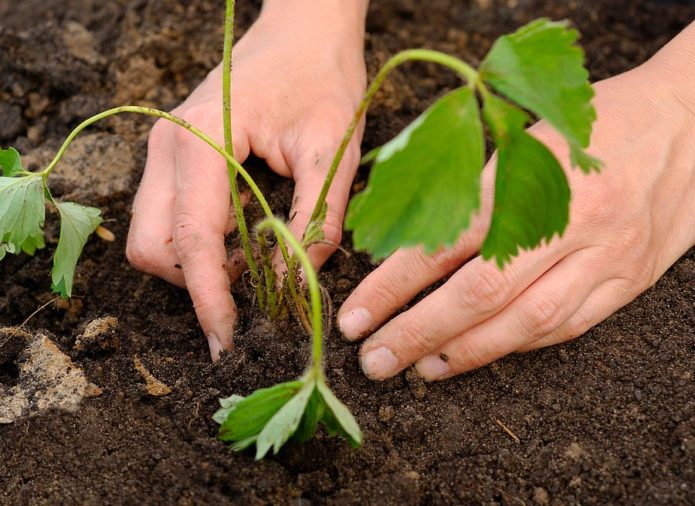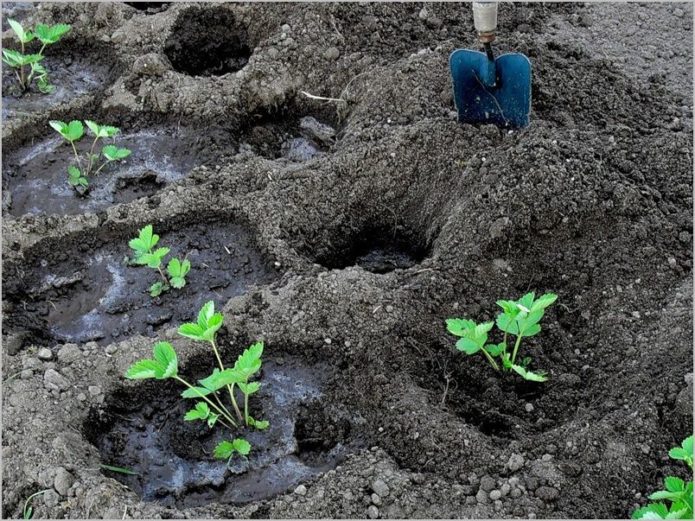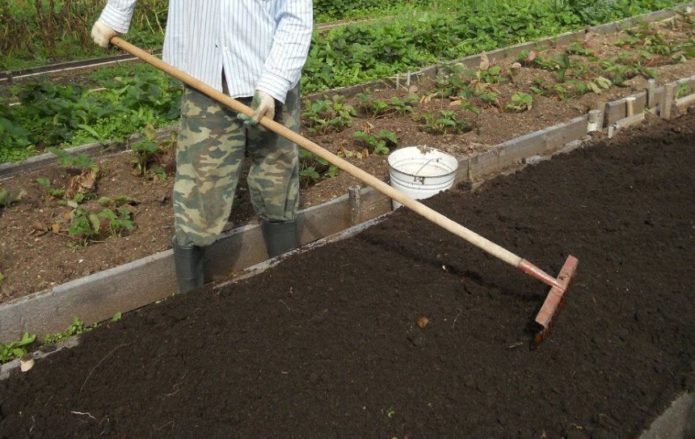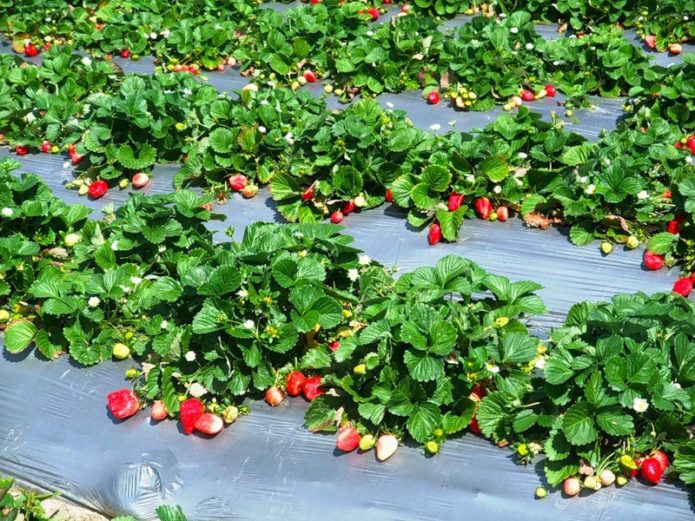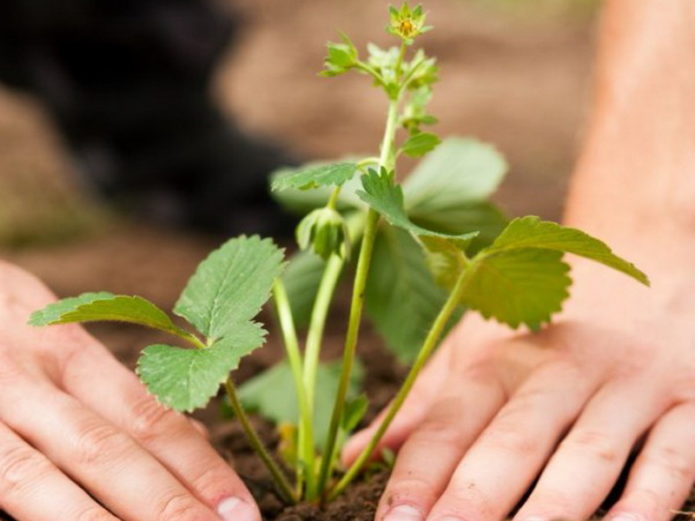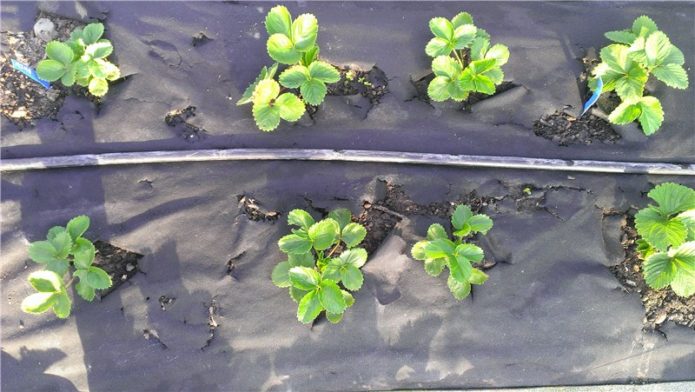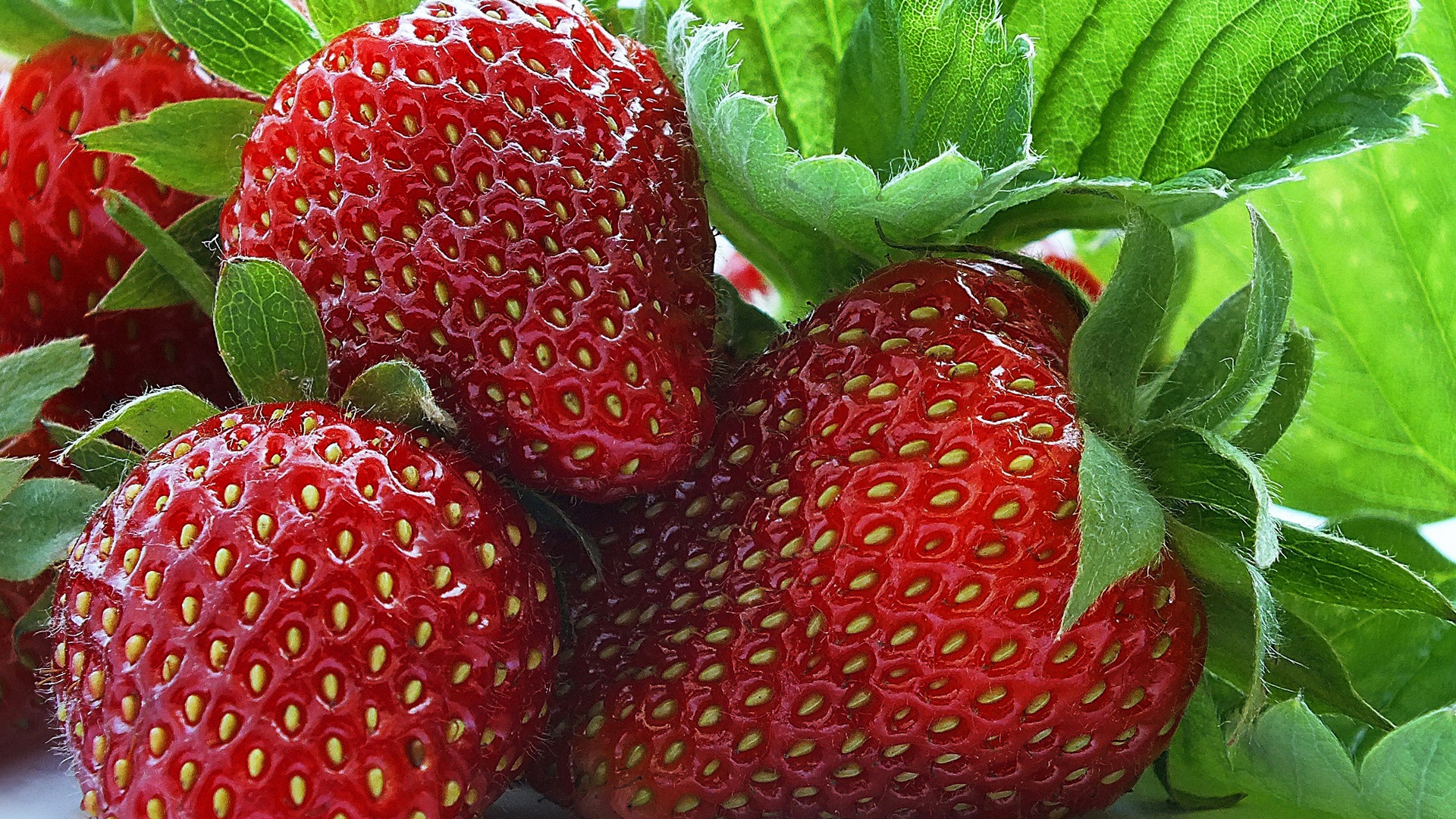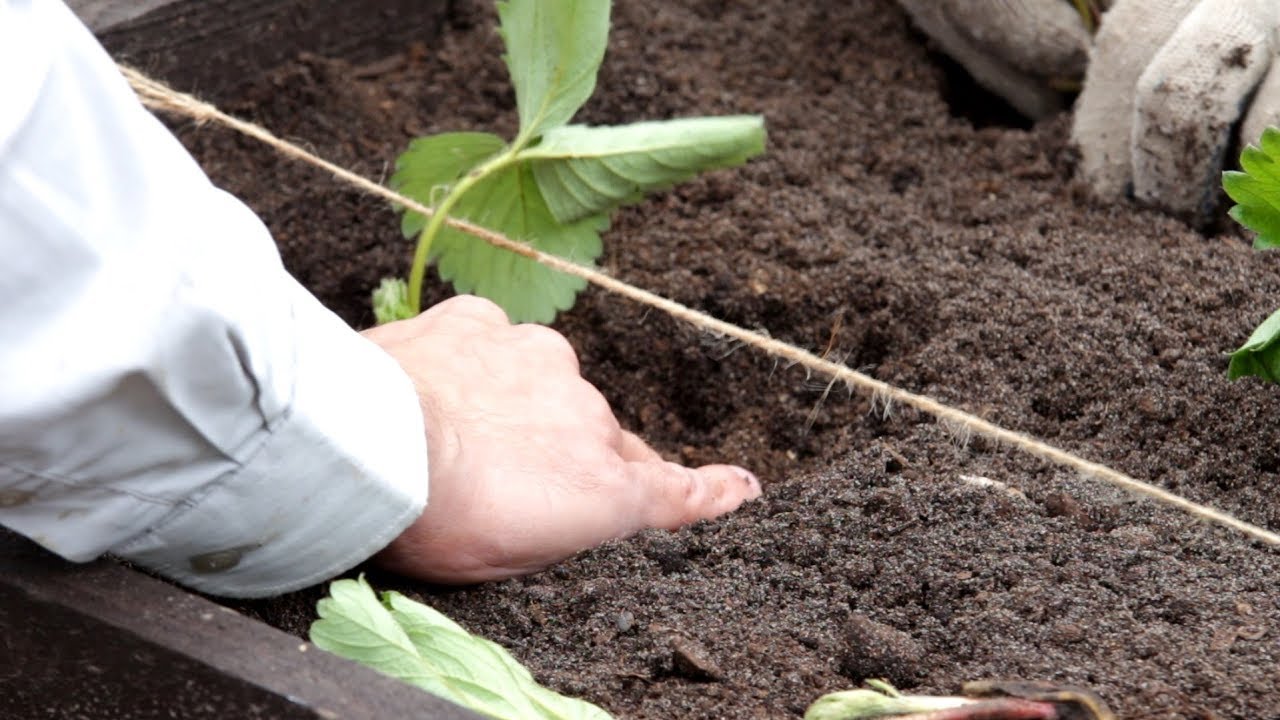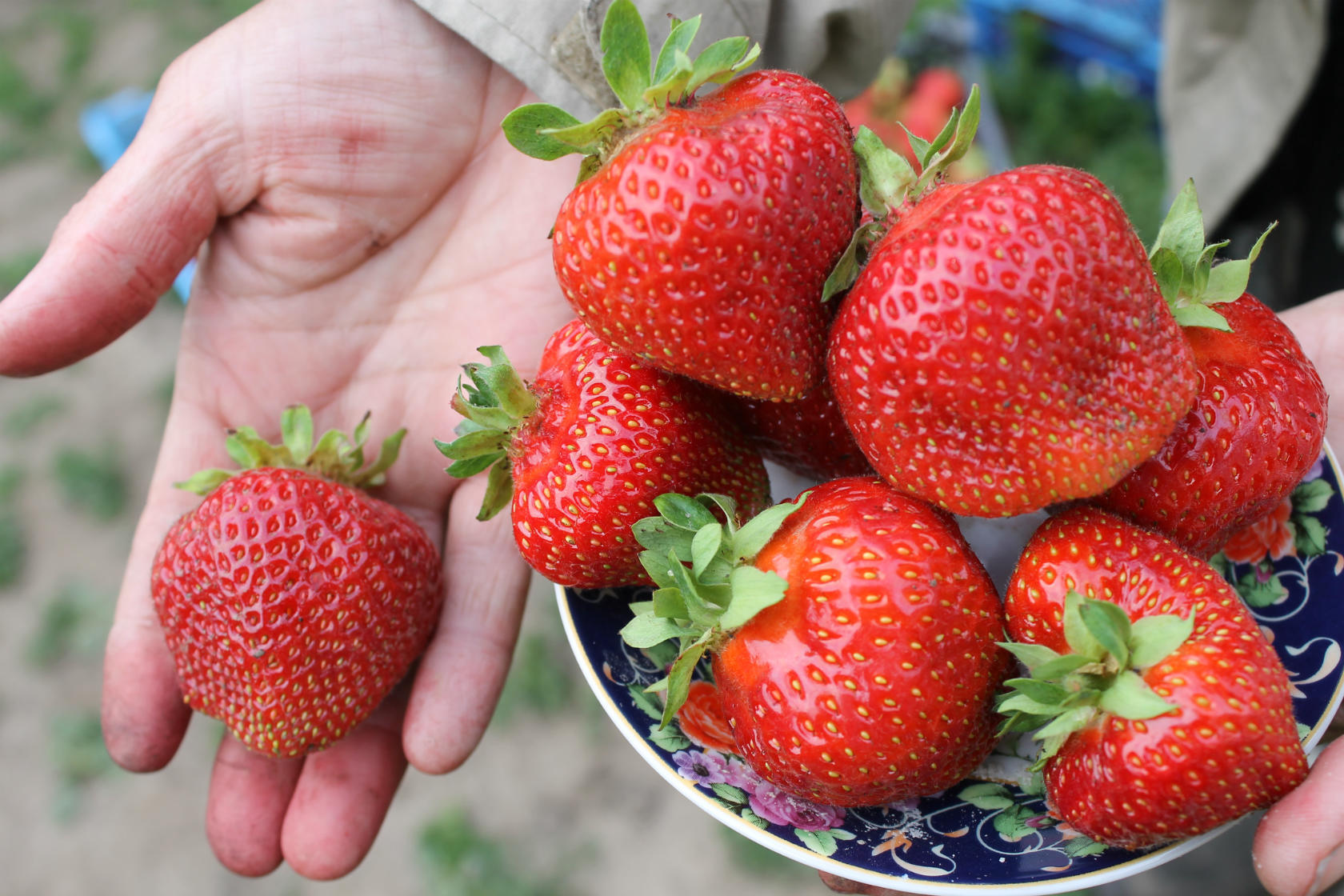Planting strawberries in autumn has a number of advantages over spring. If the technology is observed, the plant takes root easily and quickly, it winters well and without losses, and the next year it pleases with a stable and high yield of berries.
Content
Why is it customary to plant strawberries in autumn, not spring
The autumn period for gardeners is more free: there are no active planting and preventive works, therefore, berry bushes can be planted in a measured manner.
The obvious advantages of an autumn landing:
- the soil warmed up during the summer time contributes to the rapid survival of the culture;
- the choice of planting material in the fall is richer;
- berry bushes develop faster and grow more actively;
- modern varieties and hybrids are able to form an early harvest precisely during autumn planting;
- in the fall, strawberry beds don't need much attention.
Traditionally, strawberries were planted in early spring, when the soil is well heated to a sufficient depth and young berry seedlings take root easily. As practice has shown, autumn planting is also very promising and gives good results.
Disembarkation dates
You can correctly determine the timing of disembarkation, given the climatic features. There are only three periods:
- from mid-August to mid-September,
- from late September to mid-October,
- four weeks before the onset of the first noticeable frost.
Planting dates for strawberries, depending on the location: table
| Territory | Optimal planting times |
| Moscow and Moscow region | From early August to late September |
| St. Petersburg and Leningrad region | Mid August to early September |
| Middle zone of Russia | From late summer to mid-September |
| Ural | From the last decade of July to mid-August |
| Siberia | Until the last decade of August |
| Southern regions | October |
| Belarus | September |
| Ukraine and Moldova | Until the last decade of October |
It is the autumn planting that guarantees the harvest the next year. When planting in spring this year, the berry will not work.
How to prepare the beds for planting
Strawberry beds should be well lit by the sun and have adequate protection from gusty winds. The best place would be the southwest side with a slope of 2-3about.
Good predecessors for berry culture are:
- siderates;
- mustard;
- beans and peas;
- radish and radish;
- carrots;
- celery or leaf and root parsley;
- onions and spring garlic.
Unwanted predecessors are presented:
- tomatoes;
- potatoes;
- eggplant;
- cabbage;
- pepper;
- cucumbers;
- Compositae and buttercups.
The soil for cultivation must be as fertile as possible and rich in essential nutrients. This requirement is due to the growth of berry bushes, as well as their active fruiting in a dedicated and prepared area for three or four years.
The soil acidity should be 5.0–6.5 units, and the groundwater depth should be within 60 cm. The soil is checked by the time of planting. You need to make sure that there are no Colorado potato beetle and wireworm larvae on the site. If necessary, ammonium nitrate is introduced a month before planting. Watering the soil with a solution based on the drug "Confidor", "Marshal" or "Bazudin" is highly effective.
At the preliminary preparation stage, about a couple of weeks before planting, the strawberry area is necessarily dug up onto one shovel bayonet. For digging, 10 to 20 kg of well-rotted manure or humus, as well as about 25–30 g of superphosphate and 15 g of potassium chloride, are introduced for each m². Sour soil needs deoxidation, so about a year and a half before planting strawberries, lime is introduced at the rate of 4–6 kg m². Immediately before planting, the soil is re-loosened to a depth of about 15–20 cm.
How to prepare planting material
The ideal option for breeding is a healthy seedling bred from mother bushes. Such berry seedlings have maximum resistance to diseases and plant parasites, and also form a larger yield. High-quality seedlings may have one or several horns, but they must be healthy and well-developed, light green in color, at least 7.0–7.5 mm thick. The root system of high-quality seedlings is branched, up to 7-8 cm long.
The presence of dark or white dots on foliage indicates a fungal infection, and wrinkled young leaves are a common sign of strawberry mites. Strawberry foliage must be juicy green, leathery and shiny, with a characteristic and very noticeable pubescence. The minimum number of leaves is 3-4 pieces.
In preparation for planting, too long roots are shortened, and diseased, rotten or dry parts are neatly trimmed. Strawberry roots must be soaked for an hour and a half in a container with a growth stimulator "Epin" or "Kornevin". A good result is obtained by soaking the roots in an aqueous garlic infusion. Such a preventive measure significantly increases the natural immunity of the berry plant, and also helps to scare away harmful insects at the stage of rooting.
Planting instructions with diagrams, pictures and details
Autumn planting of strawberries is a priority in many regions, but seedlings of berry crops should be planted only on a fairly warm and cloudy day, preferably a rainy day. In this case, the soil on the prepared ridges should be moist.
In open ground
Prepared strawberry seedlings are planted in several ways. Gardeners use single row as well as double row methods. The principle of the first planting option assumes the distance between the ribbons is 60–70 cm and the distance between the bushes is 15–20 cm, but the two-row method is more effective. In this case, the distance between the ribbons is 65–70 cm, and between the rows - about 30 cm. Seedling bushes are planted with a distance of 15–20 cm.
Some gardeners prefer planting berry seedlings on the beds. This method is perfect for arranging in areas where there is stagnant water or groundwater is too close. The ridges should be located from south to north, and the seedlings are planted in two rows.Many gardeners also practice the so-called compacted planting of strawberry bushes, which makes it easy in spring to get rid of those that died during the winter or too weak, unproductive plants.
For spunbond, agrofibre or film
In recent years, in the context of home gardening, the method of planting strawberries under spunbond, agrofibre or film has been increasingly used. Planting strawberry seedlings under a black covering material is carried out in order to reduce labor costs and to increase yields by about 25-30%. The bottom line is to effectively protect berry plantings from drying out the soil, freezing of the root system in too severe winter frosts, soil erosion, as well as overly active growth of weeds.
High-quality covering material in the form of spunbond, agrofibre or film is resistant to UV rays, and also has water and air permeability. Such modern covering films can be of different widths, which allows them to be used on beds of various sizes. Nevertheless, when joining two or more strips of the canvas, they must overlap. The standard approach of one canvas to another cannot be less than 20 cm.
After preparing the ridge, carrying out deep loosening of the soil, introducing mineral fertilizing and organic matter, it is necessary to prepare special studs for reliable fixation of the covering material. For this purpose, the wire is cut into not too long lengths and bent in half. The area for planting is covered with agrofibre, spunbond or film, and the canvas itself is fixed with metal pins along the perimeter and the lines for combining the strips. The corners, as well as the joints, can be pressed against the soil with stones, as well as boards or any other heavy elements.
If the planting area covered with agrofibre is too wide, then it is very important to equip board paths or tiled passages between the rows of berry bushes. After the paths are made, with the help of chalk, markings are made on the covering material. The distance between the grooves should be 60–80 cm, and between the plants in each row, approximately 15–20 cm.
In accordance with the markings made with a sharp knife, cross-shaped cuts are made, and the resulting corners are bent outward. Ordinary planting holes are made under the cruciform incisions. If necessary, they should be filled with fertile soil, after which they are watered with warm and settled water. Strawberry seedlings do not like planting too deep, so the heart of the berry bush must necessarily remain above the soil surface.
What care to provide after landing
Immediately after planting strawberries in a permanent place, it is necessary to provide full care, ensuring the development of the root system for young bushes. For this purpose, berry plants at the stage of survival must be regularly watered, shallow loosening of the soil, as well as preventive treatment against diseases and pests, and shelter for the winter period.
Watering and feeding
Throughout the first week after planting in open ground, seedlings should be irrigated every other day. After the young plants are well rooted, you can prune and simply keep the soil loose and slightly damp. Watering is carried out in the morning, warmed up in the sun and settled water. It is necessary to avoid water ingress on the ground part of the plants. Fertilizers with proper soil preparation for planting will need to be applied for 3-4 years.
Preventive actions
Standard preventive treatment of strawberries in the fall must be carried out without fail. Without such protection, outdoor plants can become diseased or suffer from pests that often hibernate in foliage or the top layer of the earth.
For prevention, you need to loosen the soil around the bushes and treat the soil with a solution based on 1.5 tbsp. l. drug "Karbofos" and 5 liters of warm water. A good result is given by using 2% Bordeaux liquid or a solution prepared using ½ tbsp. l. copper oxychloride and 5 liters of settled water.
Preparing for winter
To prevent berry plantings from freezing in a harsh winter with little snow, it is necessary to mulch the plants with dry leaves, peat, spruce branches, corn stalks or straw. Moreover, the minimum thickness of such a protective layer should be 5 cm.
Video: how to transplant strawberries in the fall
Autumn planting of strawberry seedlings in open ground gives positive results only if the technology is followed, and in order to improve the survival rate of plants, it is necessary to provide the berry with proper and complete care, including watering, prevention and protection.
